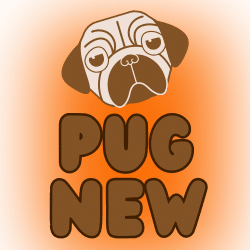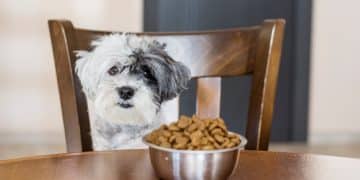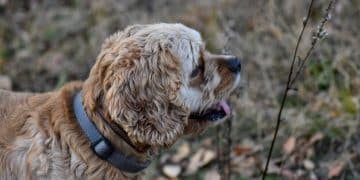Resource Guarding: Your Guide to Prevention and Management

Anúncios
Resource guarding is a behavioral issue where dogs protect their food, toys, or spaces from others, but with proactive training and management techniques, owners can effectively prevent and manage this behavior to ensure a safe and harmonious environment for everyone.
Is your furry friend showing signs of resource guarding? Understanding and addressing this behavior early is crucial for a safe and happy home. Let’s explore effective strategies to prevent and manage resource guarding in dogs.
Anúncios
Understanding Resource Guarding in Dogs
Resource guarding is a common behavior in dogs, characterized by actions they take to protect items they perceive as valuable. Recognizing the signs and understanding the motivations behind this behavior is the first step in addressing it effectively.
Dogs might guard a wide variety of items, from food and toys to their bed or even a specific person. It’s important to remember that resource guarding isn’t necessarily a sign of a “bad” dog; it’s often rooted in insecurity and the instinct to survive.
Anúncios
Why Do Dogs Resource Guard?
Several factors can contribute to resource guarding. Understanding these can help owners develop appropriate management and training strategies.
- Instinct: From an evolutionary perspective, dogs needed to protect their resources to survive. This instinct can still be present in domesticated dogs.
- Insecurity: Dogs may feel insecure about the availability of resources, especially if they experienced scarcity in the past.
- Learned Behavior: A dog may learn to guard resources if they’ve had items taken away from them frequently or in a negative way.
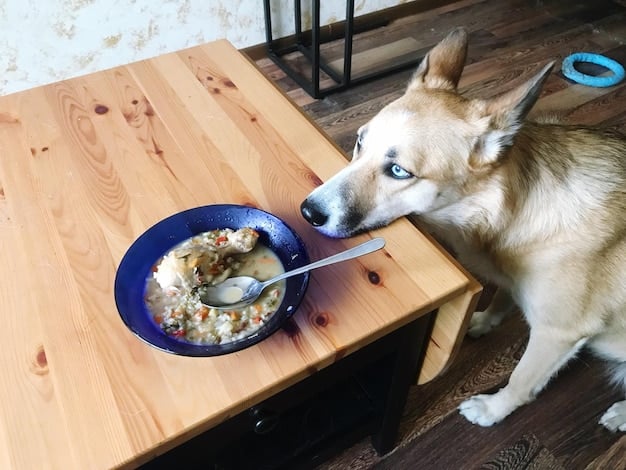
Common Signs of Resource Guarding
Identifying resource guarding early can prevent escalation. Some common signs include:
- Growling: A low rumble is often the first warning sign.
- Snapping or Biting: This is a more severe form of guarding and requires immediate attention.
- Freezing: The dog becomes very still and tense over the resource.
- Body Language: Stiff posture, lip lifting, and whale eye (showing the whites of their eyes) are other indicators.
Resource guarding is a natural behavior driven by instinct and insecurity. Recognizing the signs and understanding the underlying reasons empowers owners to proactively address and manage this behavior, fostering a safer and more trusting relationship with their dogs.
Preventing Resource Guarding in Puppies
Preventing resource guarding is easier than treating it. Starting early with puppies is key to building positive associations with people approaching their resources.
By creating an environment of trust and abundance, you can teach your puppy that people approaching their food or toys is a good thing, not a threat.
Hand Feeding and Adding to the Bowl
One effective technique is hand-feeding portions of your puppy’s meals. This helps them associate your presence with positive experiences around food.
Additionally, practice adding high-value treats to your puppy’s bowl while they are eating. This teaches them that your approach means they’re getting something even better, not that you’re going to take their food away.
The “Trade Up” Game
Teach your puppy that giving up an item can lead to something even more desirable. This is where the “trade up” game comes in handy.
- Offer a Trade: When your puppy has a toy, offer a higher-value treat or toy in exchange.
- Verbal Cue: Use a specific word like “trade” or “give” as you make the exchange.
- Reward: Praise your puppy enthusiastically and give them the new item.
Preventing resource guarding in puppies involves creating positive associations with people approaching their resources. Consistent training with hand-feeding, adding to the bowl, and playing the “trade up” game can help puppies learn that sharing is a positive experience.
Managing Resource Guarding in Adult Dogs
For adult dogs exhibiting resource guarding behavior, a more structured and patient approach is needed. It’s essential to proceed slowly and avoid confrontational methods.
Remember, the goal is to change your dog’s perception of your approach from a threat to a positive interaction. This requires building trust and creating a safe environment.
Safe Management Strategies
In the initial stages of addressing resource guarding, focus on managing the environment to prevent incidents. This might involve:
- Feeding in Isolation: Feed your dog in a separate room or crate where they feel secure and undisturbed.
- Avoiding High-Value Items: Limit access to items your dog is most likely to guard, such as bones or certain toys.
- Supervising Interactions: Closely supervise interactions with other pets or people, especially around resources.
Desensitization and Counter-Conditioning
These techniques involve gradually changing your dog’s emotional response to your presence near their resources.
Desensitization involves exposing the dog to the trigger (your presence) at a very low intensity, so they don’t react negatively. Counter-conditioning involves pairing the trigger with something positive, like a high-value treat.
- Start at a Distance: Begin by approaching the resource from a distance where your dog doesn’t show signs of guarding.
- Pair with Treats: Toss a treat towards your dog as you approach.
- Gradually Decrease Distance: Slowly decrease the distance as your dog becomes more comfortable.
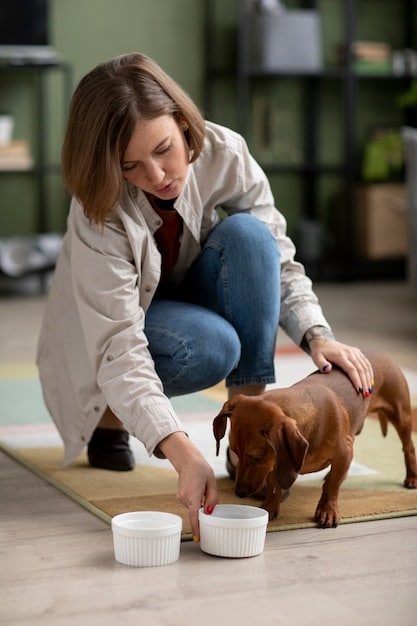
When to Seek Professional Help
Resource guarding can be a complex issue, and some cases may require the assistance of a professional dog trainer or behaviorist.
If your dog’s guarding behavior is severe, involves aggression, or if you’re unsure how to proceed, seeking professional guidance is recommended. A qualified professional can assess your dog’s specific situation and develop a tailored training plan.
Managing resource guarding in adult dogs requires a consistent, patient, and non-confrontational approach. By implementing safe management strategies and using desensitization and counter-conditioning techniques, owners can help their dogs feel more secure and less defensive about their resources.
Understanding the Role of Diet and Exercise
While training and behavior modification are crucial, diet and exercise also play a significant role in managing resource guarding.
A well-balanced diet and regular exercise can help reduce anxiety and improve overall well-being, making dogs less prone to resource guarding behaviors.
The Importance of a Balanced Diet
A diet lacking essential nutrients can contribute to anxiety and stress, potentially exacerbating resource guarding. Ensure your dog is getting a high-quality diet that meets their nutritional needs.
Consult with your veterinarian to determine the best food for your dog’s age, breed, and activity level. Some dogs may also benefit from supplements that promote calmness, such as L-theanine or chamomile.
The Benefits of Regular Exercise
Exercise is a fantastic way to reduce stress and anxiety in dogs. Regular physical activity helps burn off excess energy and promotes relaxation.
- Daily Walks: A brisk walk can do wonders for your dog’s mental and physical well-being.
- Playtime: Engage in activities like fetch or tug-of-war to provide mental stimulation and physical exercise.
- Puzzle Toys: These toys can challenge your dog mentally and provide a healthy outlet for their energy.
Diet and exercise are integral components of a holistic approach to managing resource guarding. A balanced diet and regular physical activity can help reduce anxiety and improve overall well-being, making dogs less likely to exhibit guarding behaviors.
Creating a Safe and Predictable Environment
A stable and predictable environment is crucial for dogs prone to resource guarding. Minimizing stress and uncertainty can help reduce anxiety and defensive behaviors.
Establishing clear routines and providing a safe space for your dog can foster a sense of security, making them less likely to feel the need to guard their resources.
Establishing Clear Routines
Dogs thrive on routine. Predictable feeding times, walks, and playtime can help reduce anxiety and create a sense of security.
Stick to a consistent schedule as much as possible, even on weekends. This will help your dog feel more confident and less stressed.
Providing a Safe Space
Ensure your dog has a designated safe space where they can retreat when feeling overwhelmed or anxious. This could be a crate, a bed, or a quiet corner.
- Make it Comfortable: Provide soft bedding, toys, and a water bowl.
- Never Use as Punishment: The safe space should be associated with positive experiences, not punishment.
- Respect Their Space: Teach children and other pets to respect your dog’s safe space and avoid disturbing them when they are there.
Creating a safe and predictable environment is essential for managing resource guarding. Clear routines, a designated safe space, and consistent positive interactions can help reduce anxiety and foster a sense of security, making dogs less likely to resort to guarding behaviors.
Training Techniques to Build Trust
Building trust is paramount when addressing resource guarding. Using positive reinforcement techniques can help change your dog’s perception of your presence around their resources.
By consistently associating your approach with positive experiences, you can gradually build trust and reduce defensive behaviors.
Positive Reinforcement Strategies
Focus on rewarding desired behaviors, such as calmness and relaxation, when you are near your dog’s resources. Avoid punishment or confrontational methods, as these can worsen guarding behavior.
Use high-value treats, praise, and gentle encouragement to reinforce positive associations.
- Reward Calm Behavior: If your dog remains calm when you approach their food bowl, reward them with a treat.
- Ignore Guarding Signals: If your dog shows signs of guarding, back away and try again later from a greater distance.
- Consistency is Key: Be consistent with your training and management strategies to build trust and predictability.
Building trust is fundamental to managing resource guarding. Positive reinforcement strategies, such as rewarding calm behavior and avoiding punishment, can help dogs develop a more positive association with people approaching their resources. Consistency and patience are essential for success.
| Key Point | Brief Description |
|---|---|
| 🛡️ Understanding Resource Guarding | Recognize the signs and motivations behind the behavior to address it effectively. |
| 🦴 Prevention in Puppies | Start early with hand-feeding and “trade up” games to build positive associations. |
| 🐕🦺 Management in Adult Dogs | Use safe management strategies like feeding in isolation and desensitization techniques. |
| 🧘♀️ Diet and Exercise | Balance and diet can assist your dog to be in alert state. |
Frequently Asked Questions
▼
Resource guarding is when a dog tries to protect things they value from being taken away. These items can include food, toys, beds, or even people. The dog may growl, snap, or bite to keep others away.
▼
Resource guarding is a form of defensive behavior, not necessarily aggression. It indicates the dog is feeling insecure about losing something important. It’s crucial to address it with positive methods, not punishment.
▼
Start early by hand-feeding, adding tasty treats to their bowl while they eat, and playing the “trade up” game. This helps them associate your presence with positive experiences, preventing guarding.
▼
Manage the environment by feeding in isolation and avoiding high-value items. Use desensitization and counter-conditioning techniques to change their emotional response gradually, pairing your approach with treats.
▼
If the guarding behavior is severe, involves aggression, or you’re unsure how to proceed, consult a professional dog trainer or behaviorist. They can provide a tailored plan and personalized guidance.
Conclusion
Effectively managing resource guarding requires patience, consistency, and a focus on building trust. By understanding the underlying causes, implementing preventative measures, and utilizing appropriate training techniques, you can help your dog feel more secure and less defensive, ultimately creating a safer and more harmonious environment for both you and your furry friend.
